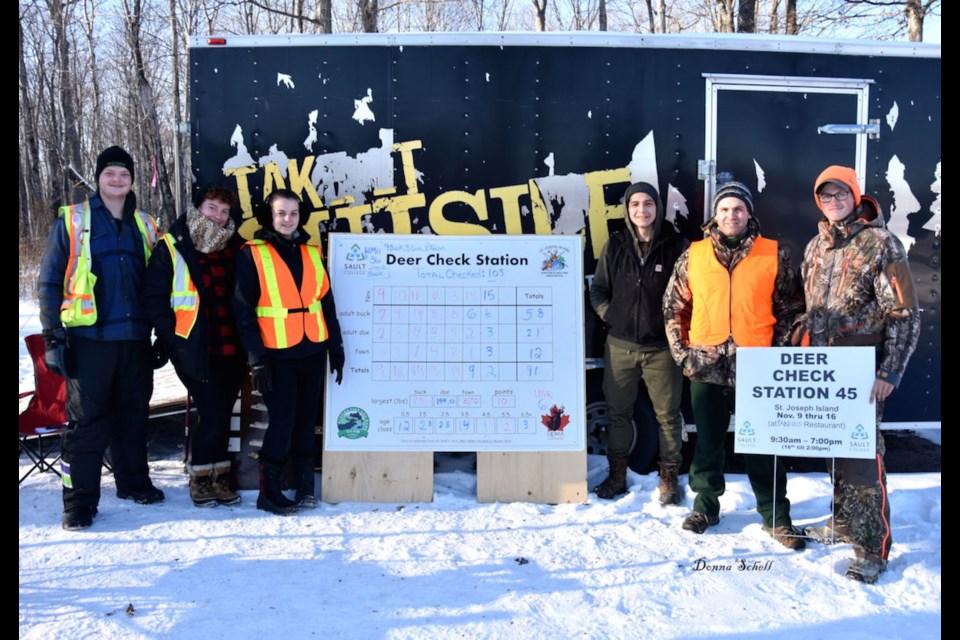Editor's note: Some readers may find the images above disturbing
It was too soon to tell whether the harsh winter of 2018-2019 had much of an effect on the local deer population.
Rifle season for white tailed deer in Wildlife Management Unit 45 on St. Joseph Island has wrapped up for 2019.
"Without the data collected last year to compare to, I would say we've had a descent amount of deer coming in," said Sault College student leader, Hunter Robert. "We've had great participation from the folks here on St. Joseph Island."
Robert, a second year Fish and Wildlife student added that the college has seen great participation from St. Joseph Island residents.
"As far as how the winter went, it was a rough on particularly the fawn class. I haven't heard anything from hunters coming up to me saying they have seen more or less deer," Robert said. "It's pretty much about the same thing as it was last year. However, it is important what we're doing by feeding the deer, trying to insure they have proper browsing in order to survive a harsh winter."
The check station, located in the parking lot at Fannies on the Island restaurant, Kent's Corner saw a study flow of traffic of curious onlooker checking out the data board.
Hunters are asked to voluntarily stop at a deer check station manned by Sault College and grant permission to students allowing them to collect vital data from the hunt. Information such as weight class, location the animal was harvested, gender and beam diameter is recorded. Additional information collected includes approximate number of deer seen, number of hours spent hunting and age class after the jaw has been removed. “
"It gives an idea how many deer within each age class that are harvested every year and we can compare that data to previous years," Robert said. "We can also see how many deer are being taken in each age class. It always for easier management."
The location is vital when collecting data. It shows what the hunting pressure is in the municipality.
"It allows us to manage the resource more effectively," he said. “…if the whole animal is brought in, and if it has been skinned, you can see the fat and overall health of the deer just by looking at its main features."
No data was taken for Chronic Wasting Disease.
Hunters were asked whether other wildlife was seen such as wolves, coyote, fox, racoon and skunks. That data helps to determine the number of predators versus prey is on the Island.
A small number of coyotes have been reported but as far as predators there nothing major.
"St. Joseph Island has a pretty good ecosystem and it stable," Robert said.
Little to no bobcats are being reported. Robert is not disagreeing the cats are not in the area but it's uncommon to see one.
"They are an elusive animal and tend to stay in areas where they cannot be seen," he said. "They're part of the ecosystem. There is no doubt in my mine they are there."
Wild cats have been seen not only on the Island but North Shore as well.
Nearing the end of the season, the board showed 91 animals from WMU 45.
Data was also collected this year from WMU 36 and WMU 37. A check station was set up for two days each in Desbarats and Echo Bay prior to the St. Joseph Island season.
Robert has enjoyed interacting with the public and witnessing their excitement, whether it's a hunter who shot the largest doe or the father-daughter team that shot her first buck.
"You congratulate them for their hunting efforts. It's just a great time, everyone's happy," Robert said adding a number of father and son teams also stopped.
"It's real nice see families come out," he said. "Hopefully, one day when I have kids I'll do the same thing. It's great to see the young hunters get into it. They are the next generation to keep the sport alive.”
Final data will be presented to the St. Joseph Island Hunter's and Angler's Association at a future meeting.
